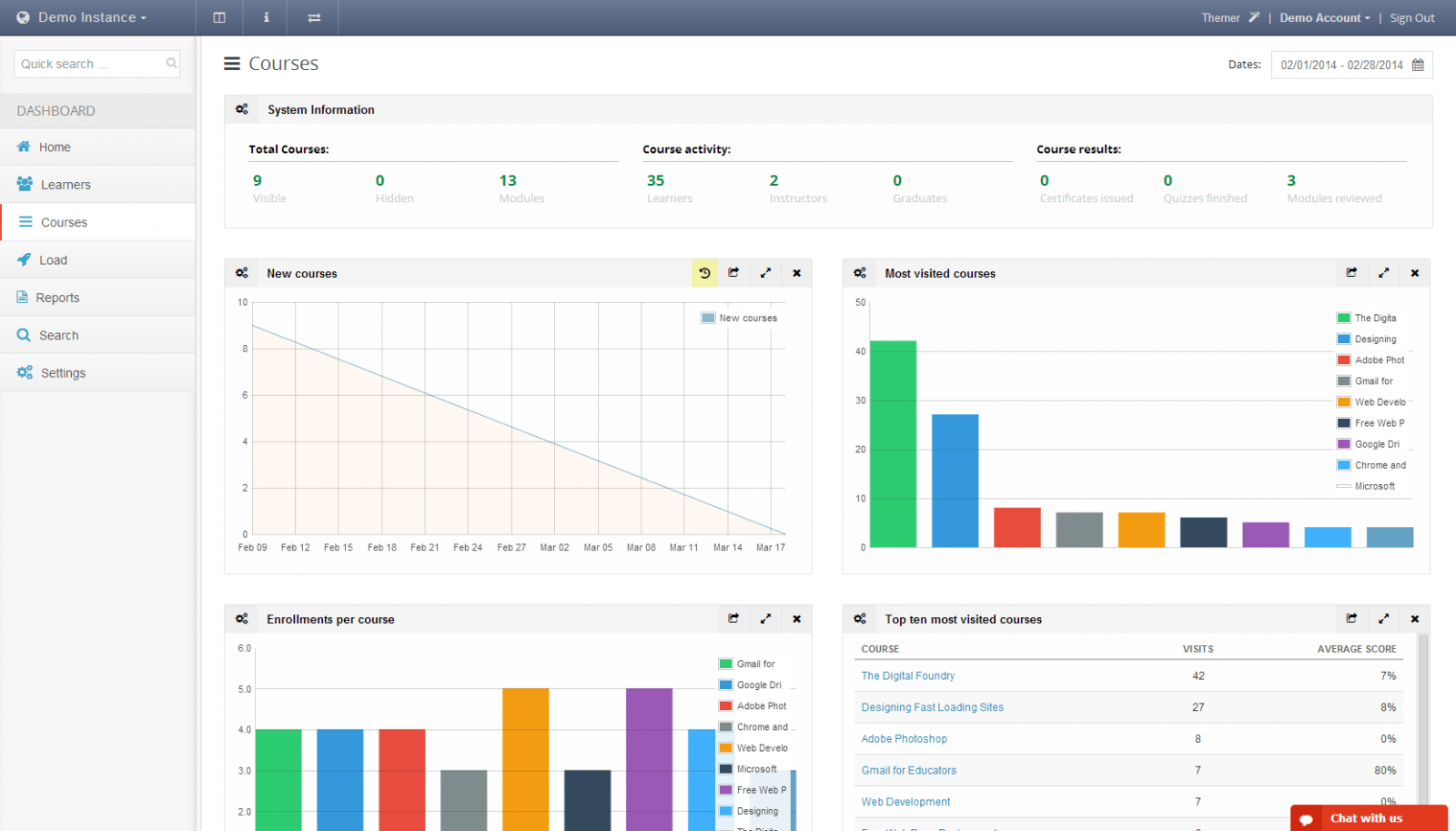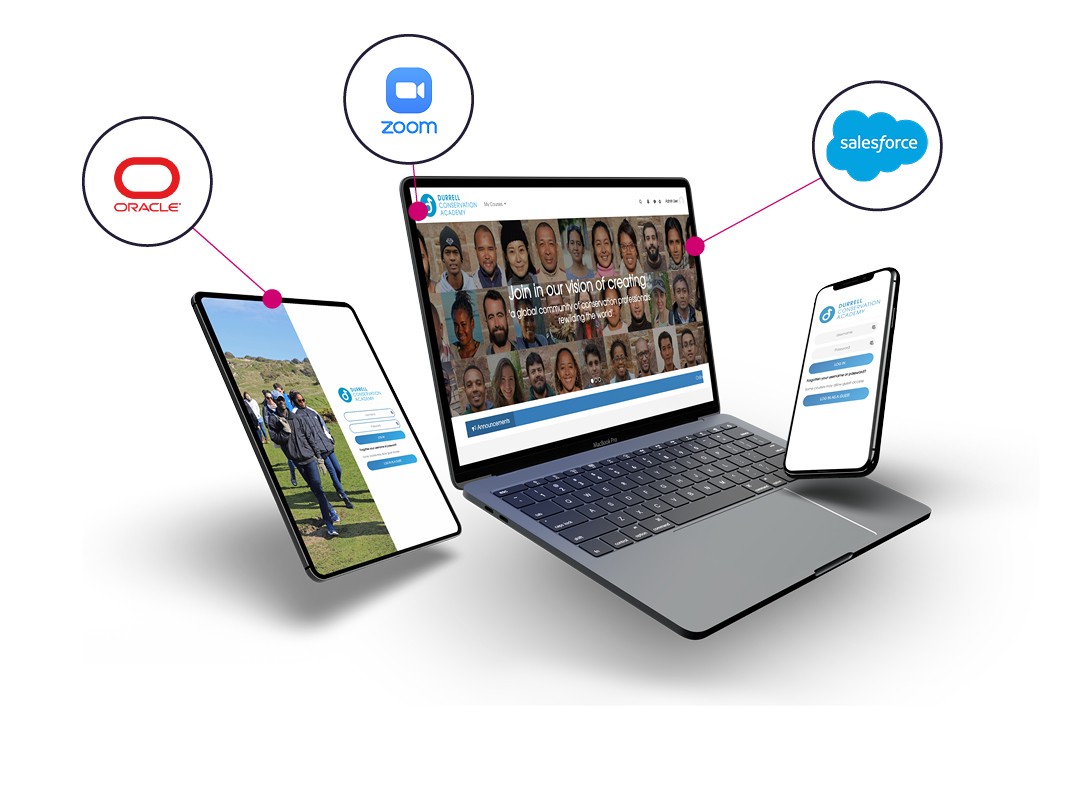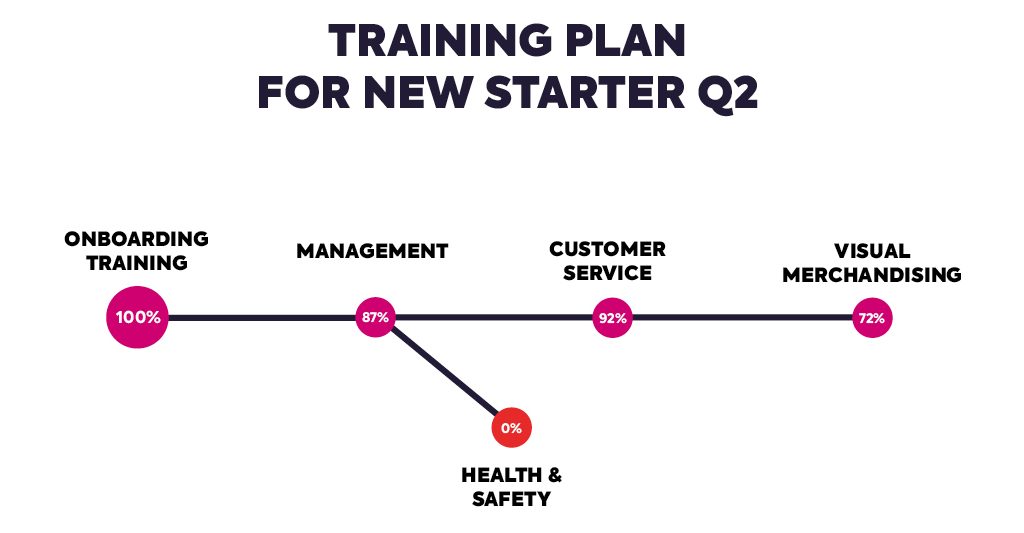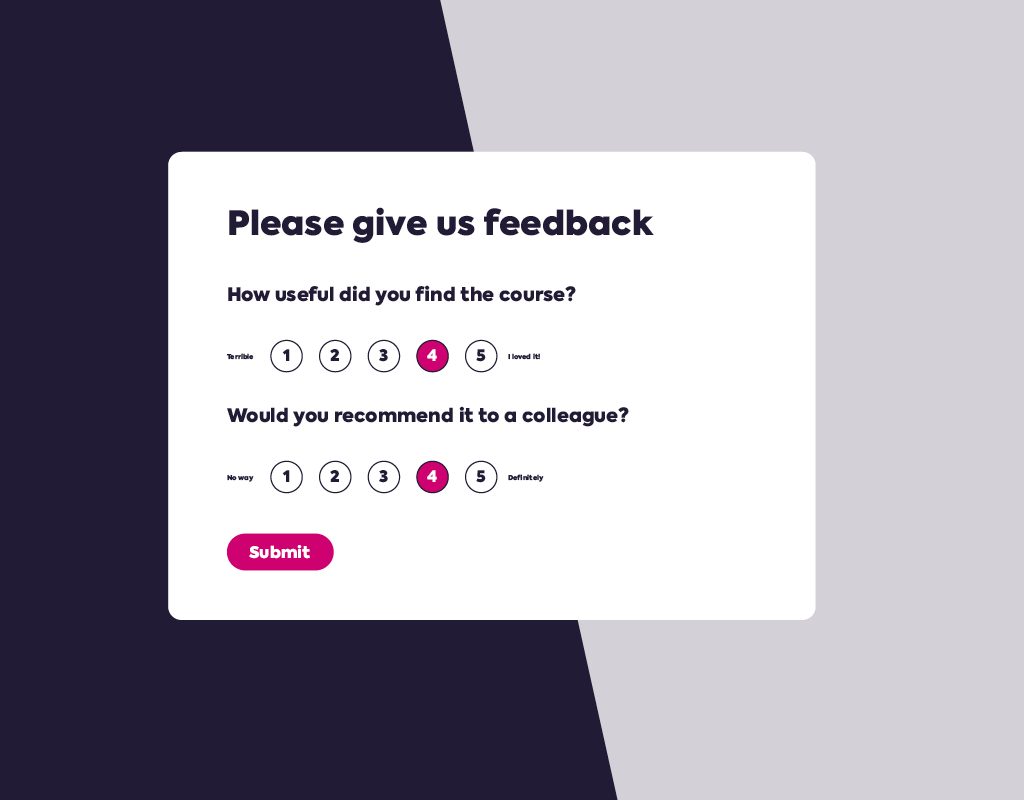- Home
- Our Solutions
Titus Services
Unlock Moodle's Potential with Titus
Migrate to Titus and transform how you use Moodle in your organisation. - Industries
- Our Work
- About
- Blog


Traditionally, L&D departments have tracked employee interactions with training at a fairly basic level. Did employee X attend the seminar, did they pass the assessment, does the course appear to have improved their performance.
In recent years though, the advent of the workplace LMS has empowered organisations to dig much deeper into the data to uncover a more nuanced view of how training is delivered, consumed and retained.
In today’s post, I’m unpacking some of the top benefits you can gain from effectively tracking employees’ learning and development, and sharing my advice on what to look out for when analysing your own data.
01 What are the benefits of tracking employee training?
Streamline onboarding and improve retention levels
While these two concepts are relatively distant in time – one concerned with the start of an employee’s time with your organisation, and one related to the (potential) end of their tenure, they are actually closely interrelated.
The induction period is extremely important in demonstrating that you value your new team member, and the knock-on effect of inadequate or incomplete onboarding can lead to embedded dissatisfaction which leads in time to higher staff churn. Conversely, employees who feel that the company is investing time and attention in their development are likely to display reciprocal loyalty throughout their career.
Proper tracking of the training a new starter receives during the onboarding process is vital to ensure that they are engaged and empowered to take on the responsibilities of their new role.
Stay on top of compliance
In many sectors, effective tracking and record-keeping of training completed by your staff is not just a “nice to have”, it’s a key requirement. If you’re operating in an industry where an audit that reveals even a single staff member’s lack of up-to-date certification could mean serious financial or legal penalties, then tracking compliance is mission-critical.
This is as true for basic health and safety certifications as it is for compliance with complex legal or financial regulatory frameworks – if employees’ qualifications have lapsed, you’re faced with an unplanned lack of resource.
Level up your L&D provision
Without knowing how your employees are interacting with your training, it’s almost impossible to make constructive decisions about what’s working, and what needs improvement. The more detail and the more data you can gather and analyse, the better you’ll understand where your strengths and weaknesses lie.
It’s also a crucial point to gather feedback on the process itself, with a view to continuously improving the experience for subsequent cohorts of learners.

Many L&D departments are facing increasingly stringent controls on their budgets, and are expected to be able to account for their spend in terms of proven returns. Even in organisations where employee training is unquestionably a priority, it’s important to be able to calculate the value-add that the L&D team delivers, in order to better target spending in future.
Being able to accurately track not only your employee’s completion of training but to drill down and report on the specific benefits to the business resulting from upskilling or reskilling is a vital asset in budget discussions or spending reviews.
02 Tracking training using an LMS

Hang on, what if we don’t have an LMS?
In all seriousness though, if you don’t have an LMS in place (or your LMS doesn’t offer much in the way of tracking), the simple answer is we’d recommend you look into getting started with one as soon as possible. Moodle Workplace would be our recommendation (if that’s not already obvious!).
Of course, there are other options, but in our experience, none of them are as effective. Some companies we’ve worked with have originally used their HR system, their CRM or even shared Excel documents to record training data. But these options aren’t entirely fit for purpose and don’t offer the rich analysis and reporting options found in leading learning platforms.
There is a perfectly reasonable argument for wanting training data to be synced to your HR system, particularly where records are needed for compliance purposes.
But this is best handled by integrating your LMS and HR system together and letting each one do what it does best. Moodle, for example, integrates with the majority of HR systems on the market out of the box, and for the occasional exceptions, its open-source framework makes it straightforward enough to develop a custom integration without excessive spend.
03 What should you be tracking?
Depending on the system you’re using, you may have more or less of the following options available to you. We’ll look at the possible scenarios in roughly increasing order of complexity and sophistication. The further down the list you can go, the more holistic a view you’ll have of the state of play with regard to learning and development within your organisation.
Pass Fail – At the most basic level, tracking employee training means knowing which of your staff has successfully completed the training they’ve been assigned, or by extension, which staff members need to repeat a session. However, this only gives a very simple overview of the situation and doesn’t offer much insight into why employees are performing differently.
Grades – Tracking grades, either as percentage scores or via discrete grade boundaries offers a little more depth, allowing you to establish a performance curve, and work out whether there are significant outliers. You can also use averaging to establish a benchmark for future trainees, and make individual pass-fail adjustments where overall grades are close to the threshold.
Course completion – Rather than waiting until the employee has completed their training to perform your analysis, most learning management systems will allow you to view course completion statistics either at a group or individual level. This can include grades for subsections of the course, but also give you valuable information on the resources accessed and activities completed, even before any formal assessment has taken place.

Learner journeys – Ideally, you should be able to track every interaction that a learner has with your courses.
Learning platforms such as Moodle Workplace allow a significant degree of personalisation in terms of the learning path which an individual employee will take, with support for different learning styles, choices of activities and resources to best support the individual, and the option to repeat or skip sections depending on their pre-existing knowledge or ability.
Understanding how different employees experience and progress through your training is vital to effectively plan future courses, and tailoring your L&D offering to the specific needs and requirements of your learners, your organisation and your sector.
Learner Feedback – As well as accruing and analysing quantitative data on your learners, it’s useful to gather qualitative data as well. Providing your employees with the opportunity to give feedback on training can uncover valuable information about how well your courses are designed, the level of difficulty, the user experience, and much more.
Ideally, learners should be able to feed back at multiple points during their journey through the course. This can take various forms, from a simple “leave feedback” button added at the end of course segments, to a more in-depth survey where your employees can grade their experience against categories such as ease of access, the difficulty of the material, availability of support, and so forth.
Platforms such as Moodle Workplace will allow you to make successful completion of a course contingent upon the learner filling out a feedback form or survey, ensuring you maximise the amount of data gathered.

Engagement Stats – While the ability to view and analyse data on an individual level is important, it’s equally beneficial to be able to see the bigger picture. Learning platforms generate and record huge quantities of useful metadata, and with the right reporting tools in place, you can better understand how well your employees are engaging with their learning as a group.
Key statistics such as the number of logins per week, average time spent using the LMS, popular times of day to log on, and so on, all contribute to building a more detailed picture of employee behaviour and can highlight areas that require a change in focus or additional resources.
The LinkedIn Workplace Learning Report from 2020 found that unlike other digital disciplines like marketing, an industry-wide set of metrics is yet to emerge. However, here’s a summary of some of the stats you might want to focus on:
04 Enhanced Reporting
Depending on the LMS you’re using, the tools available for reporting, and the level of customisation available to you will vary. Similarly, the different platforms on the market offer different levels of complexity in their reports, from simple data dumps providing you with a text file or Excel sheet to interactive dashboards which present the information visually.
According to your specific requirements, it may be useful to add a specialist reporting tool, either as a plugin or add-on to your learning platform, or a SaaS product that integrates with the LMS via an API, to add extra functionality, improve the user experience or take advantage of automation. For example, many of our clients have chosen to implement Intelliboard – a visual reporting suite designed for Moodle Workplace and Moodle LMS.
The biggest trend in reporting and analysis within the learning industry is undoubtedly the move towards AI-driven systems.
These use a combination of algorithms and machine learning to help analyse and develop insights from the “big data” gathered by learning platforms, highlighting patterns of learner behaviour, identifying roadblocks and pinpointing areas where individuals or groups are struggling with the material. The key benefit here is not to replace the work of human professionals, but rather to reduce the load in terms of basic administrative tasks, providing an accurate higher-level overview which forms a basis for key decision making.
As the technology develops we expect to see organisations empowered to make rapid improvements to the design and delivery of courses, gather and act on learner feedback in real-time and introduce much deeper personalisation of the entire experience from beginning to end. Keep an eye on our blog for news on the latest developments.
05 Getting started with tracking employee training
Whatever stage you’re at in researching and procuring a new LMS, the team at Titus is available to help. Contact us for a no-strings-attached discussion on the options and functionality available via Moodle Workplace or Moodle LMS. We’ll be happy to cover the questions mentioned above, as well as referring you to clients in your sector for whom we’ve delivered best-in-class learning platforms.

Privacy Policy | Cookie Policy | Data Protection Policy | Equality, Diversity and Inclusion Policy
© 2023 Titus Learning LTD | Company Number 08799881 | VAT Number 1813 09027
Super talented, unflappable and very funny, Phuong supports the whole marketing team in her role as Digital Marketing Executive. Phuong holds a bachelor’s degree in Business Administration and recently completed a master’s degree in Management and Marketing. Originally from Hanoi in Vietnam, Phuong is now based in the UK and climatising brilliantly to our weather and food.
Phuong owns a food review Instagram page as travelling and food are her passion. She also has a cute little french bulldog.
Ellie was the first woman to join Titus and has paved the way for many more since then. After studying for a degree in Fashion and Marketing, Ellie was lucky to find herself at fashion weeks and photoshoots.
Now she’s switched from talk of the front row to front end design and has brought loads of transferable knowledge to Titus. Ellie has also found a real passion for tech, especially in the learning sector, helping clients create positive change for their organisations.
As one of the youngest people at Titus but at the same time one of the oldest serving members of the team, Callum has graced Titus with his broad smile and positive attitude for over 5 years now. As a key member of the marketing team, Callum works across all areas, both on and offline, to ensure that all Titus brands and communication are on point.
After missing out on the opportunity to go to University the first time around, management encouraged him to enrol in our course alongside his work. He is now studying to achieve his Level 6 Diploma in Professional Digital Marketing.
Always bringing innovation and new ideas, Dec studied a degree in Journalism but found his passion in digital marketing. Dec has also worked in marketing for one of the countries biggest retailers and within the property sector.
Outside work, Dec Co-founded a news publication where he collaborated with global brands like Uber, Amazon, BooHoo and countless SMEs.